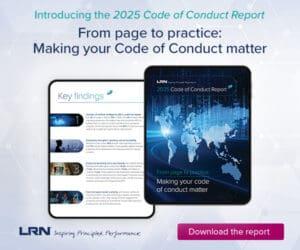An upcoming shift to principles-based bond definitions will have far-reaching consequences on how bonds are handled in the insurance investing sector. Global regulatory policy expert Sabrina Wilson shares the details teams need to know.
Providing stability against their underwriting results, bonds are among the most attractive investments for insurers today. In fact, according to the National Association of Insurance Commissioners (NAIC), bonds made up more than 62% of insurer investment portfolios at the end of 2022. However, as financial markets continue to grow in complexity, additional scrutiny is being placed on insurer bond investments and bond transparency. Hence, NAIC’s principles-based bond definition (PBBD) project.
Launched in 2019, the PBBD project was created to better define bonds, as some “bonds” that were being reported on Schedule D did not meet the NAIC’s definition of a bond. With that, the NAIC set out to better clarify the definition of bonds in their standards and avoid investments being mislabeled as bonds — intentionally or otherwise. This culminated in the revamping of two key statements of statutory accounting principles (SSAPs): No. 26R, “Issuer Credit Obligation,” and No. 43R, “Asset-Backed Securities.”
These two revamped SSAPs will have far-reaching consequences on the way bonds are handled in the insurance investing sector moving forward. Namely, bonds that meet the criteria of these two SSAPs will be able to stay on Schedule D after 2024. Those that do not will need to be shifted over to Schedule BA. Moreover, attributing these correctly will be a heavy lift for financial teams that will not only take time but will have widespread effects on financial reporting and financial costs.
With that in mind, here are a few ins-and-outs that stakeholders throughout the insurance industry should keep in mind as they look to navigate these oversight shifts and manage broader business expectations around what these shifts will mean moving forward.
Where accounting and back-office teams should focus
Accountants and back-office teams are set to have significantly full plates throughout the remainder of the year and are rightfully struggling to make sense of where to begin.
While there are likely going to be a lot of moving parts in the short- and medium-term, fortunately, it is likely that most of the bonds — for example, corporate bonds and residential and commercial mortgage-backed securities — will stay on Schedule D Part 1 if they meet the new bond definition and/or passed tests after 2024.
Therefore, the best place to start will be private structured products, including but not limited to collateralized fund obligations, feeder funds and asset-backed securities backed by non-financial assets.
Simply put, these types of products will need more compelling evidence to overcome rebuttable presumptions that they are backed by underlying equity interests and thus do not qualify as bonds. Thus, accounting teams should plan to allocate a significant amount of time toward this group so that they can successfully shift them from Schedule D Part 1 to Schedule BA prior to the end of 2024 to avoid the cumbersome transition on Jan. 1, 2025, or gather the necessary evidence needed to keep “questionable” securities as part of Schedule D Part 1 after 2024.
Threats Your Institution Faces Aren’t From the ‘Mad Men’ Era, So Why Are Your Fidelity Bonds?
Common fidelity bonds often don’t cover modern risks
Read moreDetailsWhat the C-suite needs to know
The assessments for D-1 securities are likely going to be a top priority for front- and back-office teams heading into the year-end, and thus will also take up a significant chunk of their time. The problem is that this is not the only deadline these teams face, so finding a way to optimize their workflows will be essential in avoiding year-end congestion and potentially costly oversights in reclassification or otherwise.
One of the biggest roadblocks C-suites will face is that asset reclassification will result in a heightened risk-based capital (RBC) requirement, which in turn, will result in the C-suite having to do some serious thinking about which securities that are going to be reclassified from Schedule D-1 to Schedule BA are “worth their while” to hold on to and reclassify, which should be moved to other affiliated non-insurance companies and which should simply be sold to third parties.
This process in many cases will be relatively painstaking and require careful analysis, so the sooner that the broader C-suite can engage in the process with the chief investment officer and their financial workforce, the easier it will be for the entire organization to make the right financial decision, ease headaches and streamline the workflow of the accounting team.
Refining the front-office to back-office workflow
This recent guidance means that there will be a huge amount of change for both the people making investments for insurance companies and those doing the accounting on those investments. Therefore, synergy between both arms will be paramount.
The demands of both functions when it comes to bond securities are going to change significantly, so taking a step back to analyze the established processes that are in place between the front- and back-offices will make the transition smoother for both. For example, the sides should engage in an early conversation around the types of data that will need to be provided in order to ensure that the back-office team accurately account and report on securities during the reclassification process to better document evidence for substantive credit enhancement and/or meaningful cashflow. In addition, front- and back-office teams should work closely to identify non-bonds as soon as possible to cut down on the number of transfers that need to be made at the time of transition, mitigating as many headaches and surprises as possible.
Closing thoughts
The reclassification process is not going to be easy. However, by keeping these factors in mind, organizations can lay the groundwork for an efficient reclassification process that allows them to make the best possible decisions for their organization’s short-, medium- and long-term future.




 Sabrina Wilson, CPA, FLMI is a global regulatory policy expert at Clearwater Analytics, provider of portfolio accounting, reporting and reconciliation services for institutional investors. Before her time with Clearwater, she was a manager of investment accounting at United Heritage Insurance.
Sabrina Wilson, CPA, FLMI is a global regulatory policy expert at Clearwater Analytics, provider of portfolio accounting, reporting and reconciliation services for institutional investors. Before her time with Clearwater, she was a manager of investment accounting at United Heritage Insurance.








